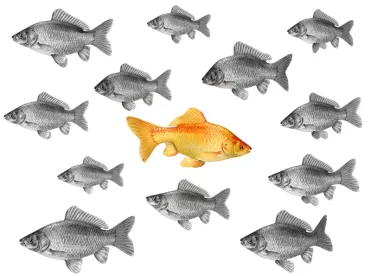The Trump administration recently announced a major action to assist the U.S. commercial aquaculture industry. President Trump’s Executive Order on Promoting American Seafood Competitiveness and Economic Growth[1] (Order) aims to increase seafood production by streamlining the aquaculture regulatory permitting process. This alert outlines the impacts of the Order on aquaculture, with reference to the impacts on offshore aquaculture in particular.
The Order mandates sweeping changes to the regulatory scheme for commercial aquaculture with ambitious goals for the expansion of domestic seafood production through aquaculture. The Order provides several tools, including the development of nationwide permits for finfish, seaweed, and multi-species aquaculture activities, and identification of Aquaculture Opportunity Areas, that have the potential to streamline development of aquaculture projects. However, the Order does not exempt aquaculture projects from any of the numerous state and federal permits required, and development of the tools identified in the Order will likely be contentious and may take years to develop. Additionally, it is unclear if any of the agency actions compelled by the Order have been funded. At a minimum, the Order shows a commitment from the President and the National Oceanic and Atmospheric Administration (NOAA) that expansion of sustainable domestic aquaculture is a high priority, particularly given the impact to the industry from the COVID-19 pandemic.
The Order mirrors many of the objectives of the Advancing the Quality and Understanding of American Aquaculture Act (AQUAA Act),[2] a bill recently sponsored by Representative Collin Peterson (D-MN) and Representative Steve Palazzo (R-MS) in the U.S. House, and previously introduced in 2018 by Senator Roger Wicker (R-MS) in the Senate,[3] that seeks to establish a regulatory system for sustainable offshore aquaculture in the United States Exclusive Economic Zone (EEZ[4]).
To begin with, the Order clarifies that NOAA will be the lead agency for any aquaculture project that requires authorization by two or more agencies to proceed, requires preparation of an environmental impact statement (EIS) under NEPA, and is located outside of the waters of any state or territory and within the EEZ. The Order also instructs agencies to complete all environmental review and authorization decisions for applicable projects within two years of publication of the notice of intent to prepare an EIS.
Second, the Order instructs the Corps to develop three new nationwide permits authorizing finfish, seaweed, and multi-species aquaculture activities, respectively, in state waters and the EEZ. The Corps must develop and propose these new nationwide permits within 90 days of the date of the Order, or by early August 2020. These nationwide permits could significantly streamline federal permitting associated with such activities, similar to the nationwide permit previously approved by the Corps for shellfish aquaculture activities.
Third, the Order mandates that the Secretary of Commerce identify “Aquaculture Opportunity Areas.” Within one year of the Order, the Secretary must identify at least two geographic areas containing locations suitable for commercial aquaculture and, within two years of identifying each area, complete a programmatic EIS for each. For the following four years, the Secretary of Commerce must identify two additional aquaculture opportunity areas each year and complete a programmatic EIS for each within two years of identification. The programmatic EIS for each aquaculture opportunity area may include identification of suitable species, gear, and reporting requirements for owners and operators of aquaculture facilities in those locations. Identification of suitable site locations for aquaculture and coordinated programmatic environmental review has the potential to remove significant obstacles to the expansion of domestic aquaculture, which are currently required to go through extensive environmental review and site selection analysis prior to permit approval, which has proven to be cost prohibitive for many potential applicants.
Fourth, the Order instructs the Secretaries of the Interior, Agriculture, and Commerce, in consultation with the Joint Subcommittee on Aquaculture, to assess whether to revise the National Aquaculture Development Plan to improve the efficiency and predictability of aquaculture permitting, including whether revisions are required to identify restrictions to operate in a specific area for a specific period of time (such as a lease).
Finally, the Order requires the Secretary of Agriculture to consider whether to terminate and replace the 2008 National Aquatic Animal Health Plan.
NOTES
[1] Exec. Order 13921, 85 Fed. Reg. 28,471 (May 12, 2020), https://www.federalregister.gov/documents/2020/05/12/2020-10315/promoting-american-seafood-competitiveness-and-economic-growth.
[2] AQUAA Act, H.R. 6191, 116th Cong. (2019–2020).
[3] Senators Roger Wicker (R-MS) and Brian Schatz (D-HI) are currently working on an AQUAA Act bill, a draft of which has been circulated to stakeholders for review and comment.
[4] The EEZ consists of marine federal waters extending from state boundaries out to 200 nautical miles from shore. For most states except two, state jurisdiction extends from the shoreline out to three nautical miles. State jurisdiction in Texas and off the west coast of Florida extends out to nine nautical miles from shore.








 />i
/>i
